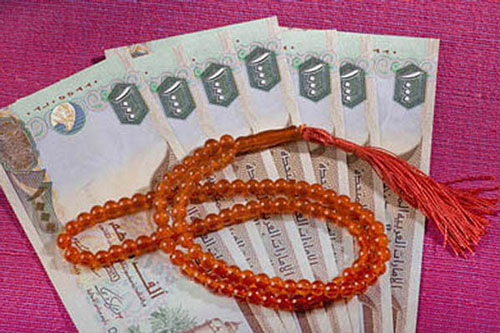Sheikh Selim
With an aggregate worth of $2.4 trillion and following a recent decade-average growth of around 6.6%, S&P Global’s predictions suggest that global Islamic finance market will show lower single digit growth in 2020-2021.
The predictions also suggest a recovery in the market following the recession, with Malaysia, the GCC and Turkey leading the recovery. The Sukuk issuance is expected to drop by $62 billion, but the recovery is expected to be achieved through liquidity injections from central banks and innovations by the Islamic banks.
Despite the slowdown in growth, experts in S&P Global are labelling the pandemic crisis as an opportunity for transformative development in the global Islamic financial market. During the crisis, core Islamic finance countries did not resort to Sukuk as their primary source of funding. The sector has continued to innovate and diffuse financial tools of savings mobilisation and capital creation.
We present a brief overview of the post Covid challenges and opportunities of the Islamic banking and Sukuk market, and discuss how innovations can make a difference.
Islamic banks’ share in the global Islamic finance industry continues to be predominant, amounting to 71.7% share in 2019. Globally this sector registered only a 0.9% growth in total assets during 2018-2019, although a moderate slowdown in asset growth in 2020 is widely projected.
This is mainly due to slow growth in oil prices, plus low economic growth in GCC economies which resulted in reduced opportunities for the overall banking system, and in turn led to sluggish lending growth. The pandemic crisis is expected to add more problems. Although the sector survived the 2008 financial crisis, the quest towards rapid modernization, enhanced quality control and the strong financial performances of Kuwaiti, Qatari and UAE-based Islamic banks are deemed insufficient to register quick recovery of the asset position. The pandemic-led loss of economic growth and employment in the region will make the situation complex unless there are significant improvements in Shariah compliance, innovation of financial tools and Fintech.
The predicted risks of Islamic Banking operations in the GCC, as identified and commonly agreed by IFO 2019 and IFSB, are higher cost of risk and lower profitability. The IFO 2019 expects that standardization of Shariah compliance may contribute to an improvement in the clarity of investment risk vis a vis risk management, which will eventually reduce the cost of risk for Islamic banks.
The pandemic crisis has prompted financial institutions to pay greater attention to environmental, social and governance (ESG) risks to build enhanced resilience in their operations. The Islamic finance principles have never been too far away from the assessment of such risks. Nevertheless, the crisis is a great opportunity to identify the areas of improvement through which these risks can be prioritised. A recent study by EIKON global database shows that Sharia compliance screening can add value to ESG performance of stakeholders.
For Islamic banks, the recent focus has been on Islamic finance social instruments such as Qard Hassan (e.g. the GCC central banks’ initiative to open liquidity lines to financial institutions to provide subsidized lending) and Waqf (e.g. the initiative to provide affordable housing solutions to people who have suffered loss of income).
—Courtesy: Zawya









